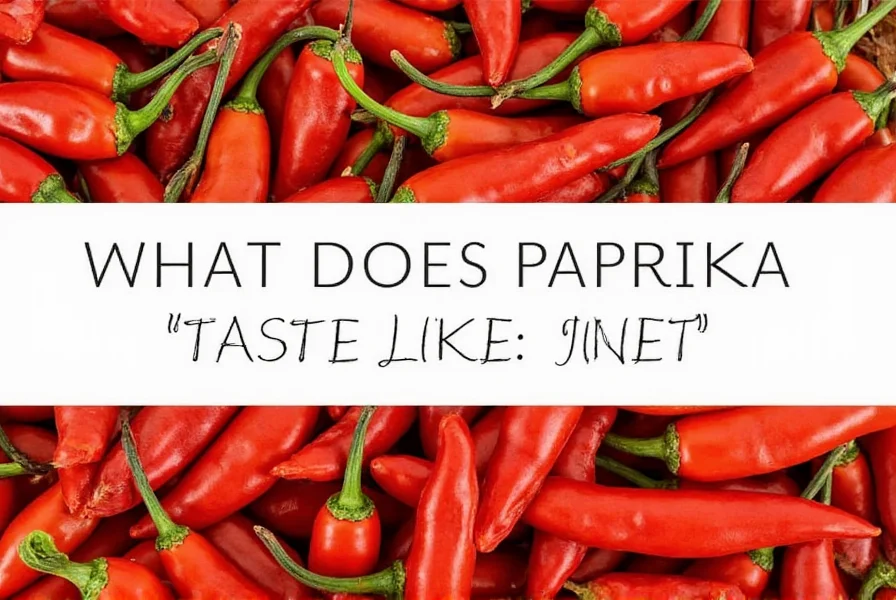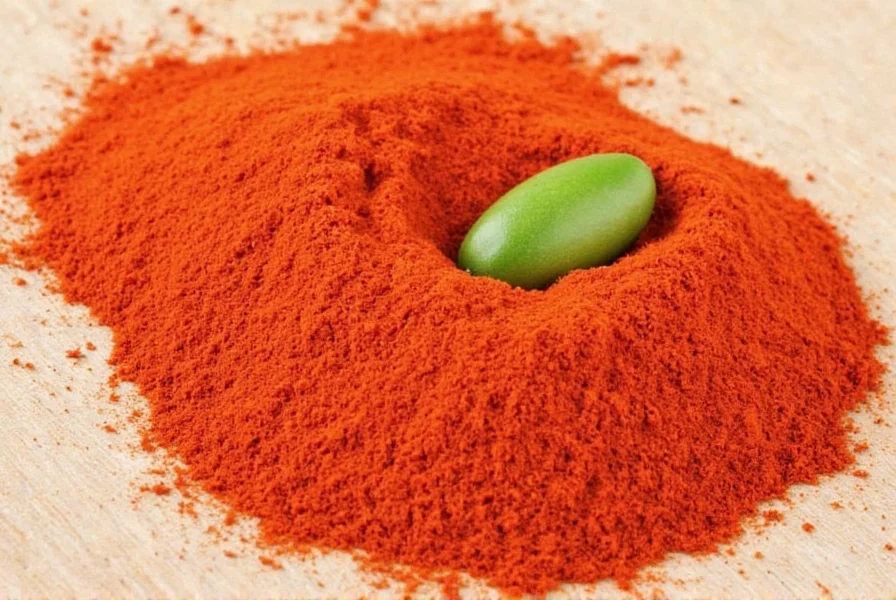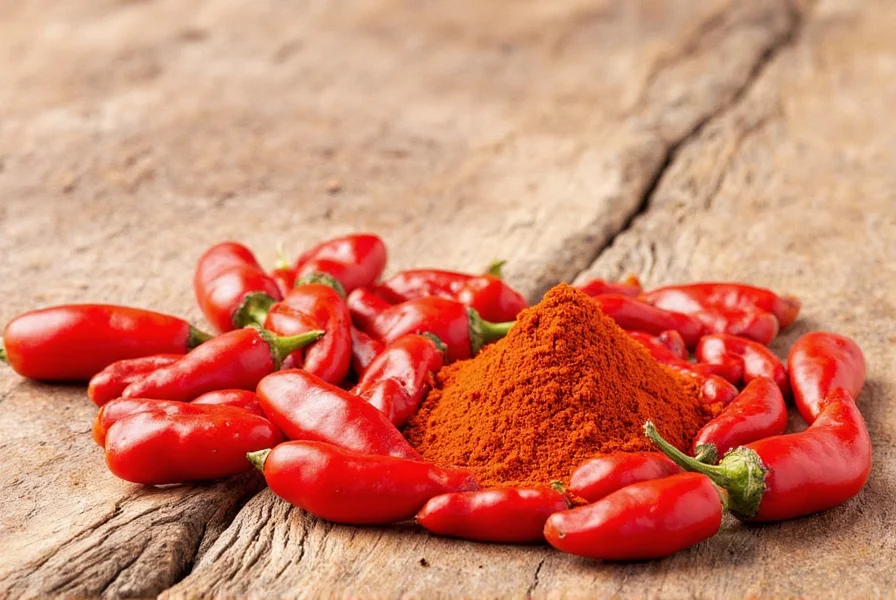Understanding paprika's flavor profile helps home cooks and professional chefs alike harness this versatile spice effectively. Unlike many single-note spices, paprika offers a complex sensory experience that transforms dishes in distinctive ways depending on its variety.
The Flavor Spectrum of Paprika Varieties
Paprika isn't a one-dimensional spice. Its taste varies dramatically across different types, creating distinct culinary experiences:
| Variety | Primary Flavor Notes | Heat Level (Scoville) | Best Culinary Uses |
|---|---|---|---|
| Sweet Paprika | Earthy, slightly sweet, mild pepper flavor | 100-500 SHU | Coloring stews, deviled eggs, potato salad |
| Smoked Paprika (Pimentón) | Wood-smoke, campfire, subtle sweetness | 100-10,000 SHU | Paella, barbecue rubs, roasted vegetables |
| Hot Paprika | Peppery, sharp, noticeable heat | 5,000-15,000 SHU | Goulash, spicy marinades, chorizo |
What does sweet paprika taste like compared to other spices?
Sweet paprika offers a gentle earthiness reminiscent of bell peppers with subtle fruit notes—nothing like the aggressive heat of cayenne or the floral notes of turmeric. Think of it as the mellow cousin of chili powder, lacking the additional spices (cumin, oregano) typically found in chili blends. When people ask what does Hungarian paprika taste like, they're usually referring to this sweet variety that forms the backbone of traditional goulash.
Many confuse paprika with辣椒粉 (chili powder), but authentic paprika contains only ground peppers, creating a cleaner flavor profile. The best way to experience pure paprika flavor is to taste a small amount on a plain cracker—you'll detect mild sweetness followed by earthy pepper notes without overwhelming heat.

How smoking transforms paprika's flavor profile
When exploring how does smoked paprika taste different, consider the traditional Spanish production method where peppers dry over oak fires. This process infuses the spice with complex wood-smoke compounds that mimic the flavor of slow-cooked barbecue. Unlike liquid smoke, smoked paprika delivers nuanced campfire notes without artificial aftertastes.
Chefs describe the flavor progression of smoked paprika as: initial sweet pepper notes, followed by distinct wood-smoke aroma, finishing with subtle bitterness that enhances savory dishes. This makes it invaluable for vegetarian cooking, where it provides the umami depth typically achieved with meat products.
Why paprika's taste changes when cooked
Raw paprika has a different flavor profile than when incorporated into dishes. The spice's volatile compounds react to heat in specific ways:
- Dry heating: Briefly toasting paprika in oil releases its full aroma but prolonged high heat causes bitterness
- Acid interaction: Tomato-based dishes mellow paprika's flavor while enhancing its sweetness
- Fat solubility: Oil-based preparations allow paprika's flavor to distribute evenly throughout dishes
Understanding what does paprika taste like in cooking explains why Hungarian chefs add it late in the goulash-making process—preserving its delicate flavor compounds that would otherwise degrade with prolonged simmering.
Common misconceptions about paprika's flavor
Several myths persist about this spice's taste profile:
- Myth: All paprika is spicy – Reality: Most commercial paprika is mild, with heat being a specific variety
- Myth: Paprika and chili powder are interchangeable – Reality: They create distinctly different flavor profiles
- Myth: Hungarian paprika is always hot – Reality: Traditional Hungarian varieties are predominantly sweet
When considering what does Spanish paprika taste like versus Hungarian, note that Spanish varieties emphasize smokiness while Hungarian types showcase pure pepper flavor. This regional distinction explains why paella requires Spanish pimentón while goulash needs Hungarian erdei.

Practical applications based on flavor profile
Leverage paprika's taste characteristics effectively:
- Use sweet paprika as both flavor and natural coloring agent in dishes like deviled eggs
- Add smoked paprika early in slow-cooked dishes to allow smoke flavors to permeate
- Combine hot paprika with complementary spices like cumin to balance heat with earthiness
- Store paprika in airtight containers away from light to preserve volatile flavor compounds
For those wondering what does paprika taste like in rubs, the spice creates a flavor bridge between sweet and savory elements, helping other spices adhere to proteins while contributing its own distinctive notes. The key to maximizing paprika's potential lies in matching the variety to your dish's flavor requirements.
Frequently Asked Questions
Does paprika taste like cayenne pepper?
No, paprika and cayenne have distinctly different flavor profiles. While cayenne delivers immediate, intense heat, most paprika varieties offer mild earthiness with subtle sweetness. Hot paprika provides some heat but remains more complex and less aggressive than cayenne's one-dimensional burn.
Why does my paprika taste bitter?
Bitterness usually results from overheating. Paprika's delicate flavor compounds degrade when exposed to high temperatures for too long. Always add paprika toward the end of cooking or bloom it in oil at low temperatures to preserve its optimal flavor profile.
How can I tell if paprika has gone bad?
Fresh paprika has a vibrant aroma and rich color. When it spoils, you'll notice faded color, loss of distinctive smell, and potentially musty or stale flavors. Properly stored in an airtight container away from light, paprika maintains peak flavor for 6-12 months.
Is paprika supposed to be spicy?
Not necessarily. Most commercially available paprika is sweet with minimal heat. Hot varieties exist, but they're specifically labeled as such. If you're using standard paprika and expecting heat, you're likely using sweet paprika which delivers earthy, slightly sweet notes without significant spiciness.
What makes smoked paprika taste different from regular paprika?
The distinctive smoky flavor comes from traditional drying methods where peppers are smoked over oak fires. This process infuses the peppers with phenolic compounds that create complex wood-smoke notes absent in regular sun-dried paprika. Authentic Spanish pimentón de la Vera achieves its signature flavor through this specific smoking technique.











 浙公网安备
33010002000092号
浙公网安备
33010002000092号 浙B2-20120091-4
浙B2-20120091-4